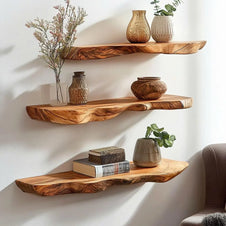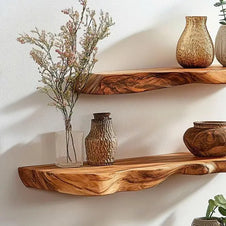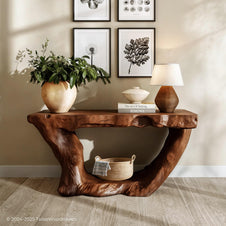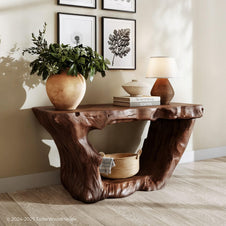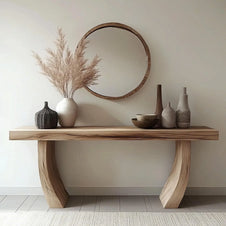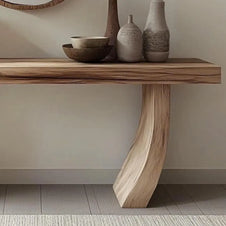Floating shelves represent the perfect intersection of architecture and interior design. They are essentially minimalist canvases. This guide explores creative and strategic answers to the perennial design question: what to put on floating shelves.
Essentials for Every Room
The items you select should harmonize with the room's function while contributing to the overall aesthetic narrative. The items you choose must honor the shelf's minimalist design, making the discussion of what to put on floating shelves central to the room's character.
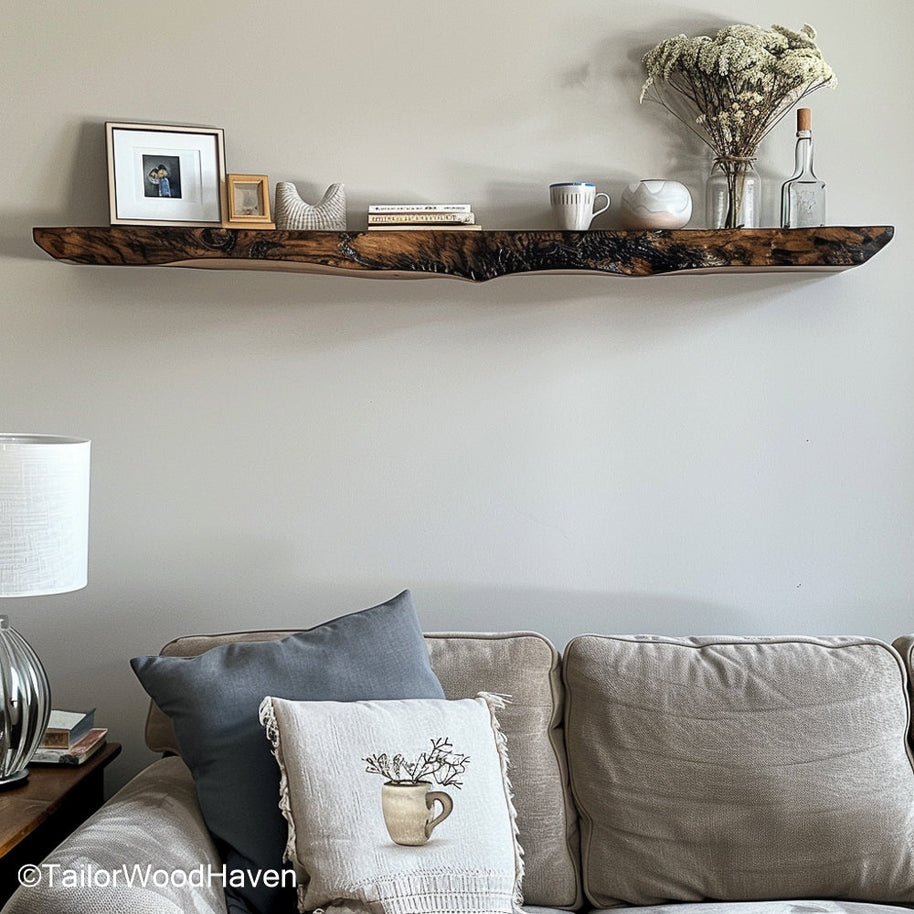
These shelves are designed specifically for stylish bottle displays in a home bar or dining area, available in rustic or dark wood tones.
1. Living Room – The Curated Conversation
The living room shelf is an opportunity to display items that spark conversation and reflect your intellectual or cultural interests.
For this key space, blending texture and color while maintaining a sense of refined ease is central to answering what to put on floating shelves.
Opt for a blend of framed prints, abstract graphics, or personal black-and-white photography. Use varied sizes, but maintain a consistent frame color (e.g., all black or all wood) to unify the collection.
Lean frames against the wall rather than hanging them to introduce depth and prevent the look from becoming too static.
Use ceramic vases as anchors, playing with different shapes (tall and slender next to short and round). These items introduce sculptural interest. They don't need to contain flowers; their form alone should function as art.
Avoid treating the shelf like a library overflow. Instead, curate small stacks (3–5 books) placed horizontally or vertically.
Horizontal stacks can serve as pedestals for smaller decorative objects, like a small crystal or a trinket bowl. For visual cohesion, consider removing dust jackets or grouping books by color.
2. Bedroom – Sanctuary and Serenity
The items here should invoke a sense of peace, calm, and personal reflection. When deciding what to put on floating shelves in a bedroom, think soft lighting, natural textures, and cherished mementos.
Scent is a crucial element of a relaxing bedroom. Group unscented pillar candles or use elegant essential oil diffusers as functional décor. The soft lighting or subtle aroma adds an immediate layer of tranquility.
-
Small Plants and Greenery: Incorporate small succulents, trailing ivy, or faux greenery in textured pots (terracotta or concrete). Plants add life, color, and a necessary organic element to balance hard lines.
-
Framed Photos and Mementos: This is the perfect spot for small, framed photos of loved ones or treasured travel souvenirs. Keep these items intimate, avoiding large, distracting displays. They serve as personal anchors that ground the space.
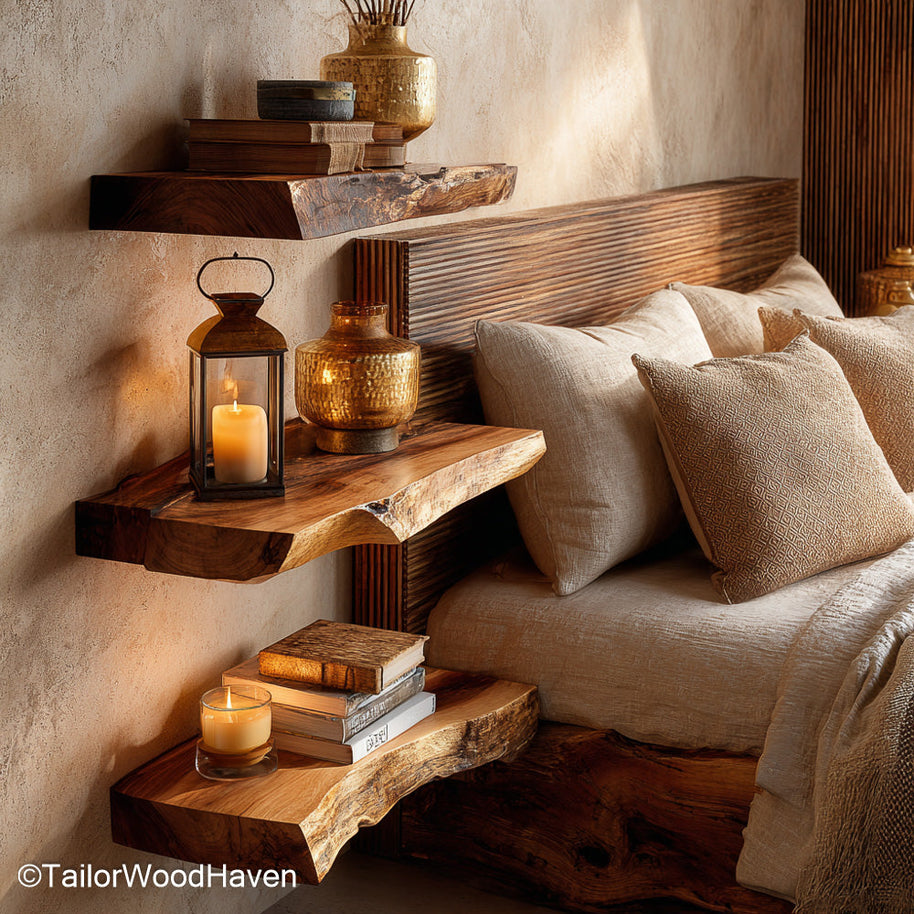
Built from dark-stained walnut, these slim shelves offer a rich, contrasting element, perfect for adding depth to neutral-toned or light-colored rooms.
3. Kitchen – Functional Beauty
Kitchen shelves require items that are both immediately useful and visually appealing. The challenge of what to put on floating shelves here is marrying utility with rustic charm or modern cleanliness.
Decant cooking essentials (flour, sugar, pasta, spices) into matching glass jars with airtight lids. This instant organization looks clean, ensures freshness, and introduces satisfying repetition.
Grouping them by height creates a streamlined effect. The decision of what to put on floating shelves often dictates the level of organization needed.
Display your best, most frequently used items. Stack a few minimalist white plates or group a collection of your favorite ceramic mugs.
Displaying open shelving dishware encourages neatness and makes the items part of the everyday décor.
Integrate a few select cookbooks for color and height, or lean a small piece of culinary-themed artwork against the wall. This breaks up the purely functional items.
4. Dining Room – Hosting and Highlights
Dining room shelves should prepare the space for entertaining and reflect a sense of occasion. When assessing what to put on floating shelves in this area, focus on elegance and reflective surfaces.
Display specialty bowls, sculptural pitchers, or handmade ceramics used for formal occasions. These pieces should stand alone as art objects.
A small, organized row of fine stemware can catch the light beautifully and signal a readiness for hosting.
This is an ideal location for rotating décor that matches the season or holiday, allowing the space to feel dynamic and fresh throughout the year.
Successfully curating what to put on floating shelves depends on treating each item as an important piece of the overall composition, rather than just something needing a place to sit.
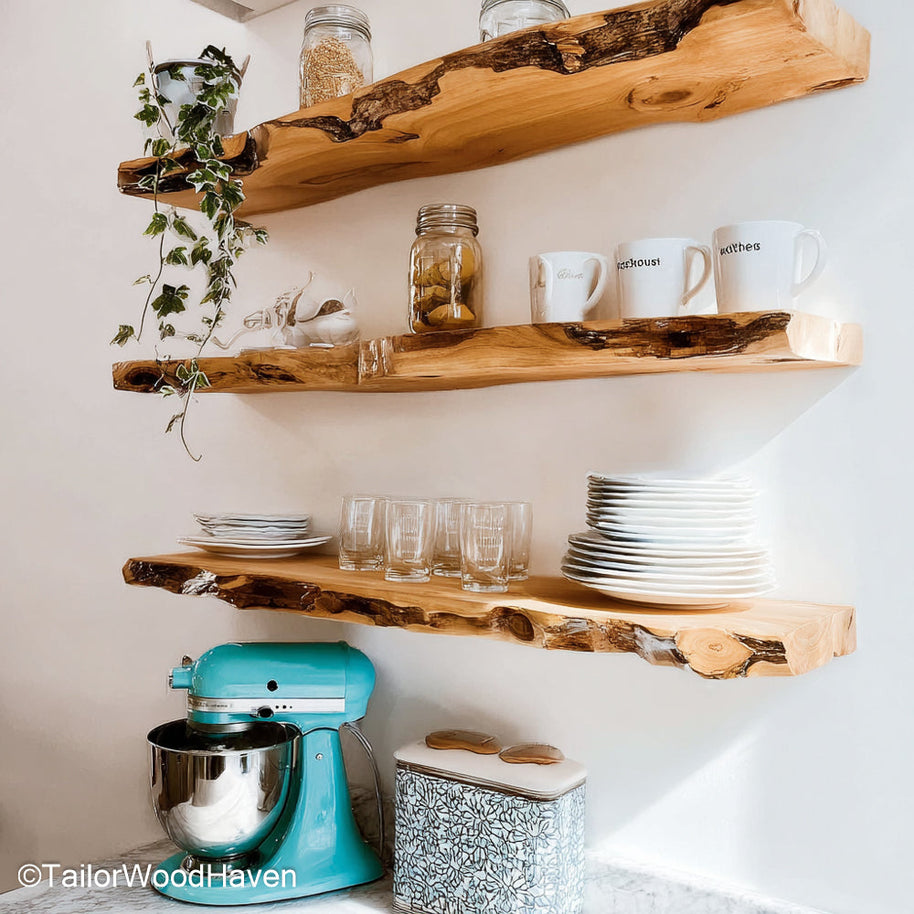
This set of three matching, handcrafted real wood shelves is ideal for creating balanced wall styling and symmetry in contemporary interiors.
Styling Principles
Regardless of the room, mastery over shelf styling involves adherence to classic design principles.
When arranging what to put on floating shelves, these rules ensure the final display feels balanced, sophisticated, and intentional.
1. The Rule of Thirds and Odd Numbers
Designers use odd numbers (groups of three or five) because they are inherently more pleasing and dynamic to the eye than even numbers. Successfully deciding what to put on floating shelves often starts with utilizing these odd groupings.
-
Triangles: Arrange three objects of varying heights to form a visual triangle. This creates flow and prevents the items from looking like a flat line.
-
Odd Groupings: Instead of two large vases, use one large vase, one medium bowl, and one small plant. This variation keeps the eye moving.
-
The Power of Three: Use this principle across the shelf: have three vertical stacks of books, three main décor groupings, and three distinct colors. This intentional asymmetry makes the question of what to put on floating shelves easier to solve, as you have a clear grouping goal.
2. Color Palette Consistency
A cohesive color scheme is the fastest route to a high-end look. The items on your shelves should not introduce chaotic, clashing colors unless the room’s entire design is built on maximalism.
-
High Contrast: Use only two contrasting colors (e.g., black and white objects on a natural wood shelf).
-
Tonal: Use three to four shades of the same color (e.g., creams, beige, and tan objects) to create a subtle, calming display.
-
Pop of Color: If the room is neutral, limit the bright color to 1–2 items per shelf (e.g., one bright blue vase or one green plant). The restraint shown in what to put on floating shelves makes the color pop more effectively.
3. Playing with Height and Texture
Floating shelves can easily look flat if all the items are the same size. Varying the height and texture of the objects adds complexity and interest.
Use stacks of books to elevate smaller objects, allowing them to participate in the visual triangle. Taper the height from one end of the shelf to the other, or create high points at the ends with a lower point in the middle.
Place rough textures (woven baskets, concrete pots) next to smooth, reflective ones (glass, metal frames). The juxtaposition of textures is key to making the display look expensive and thoughtfully layered.
By applying these principles, you move from simply filling space to strategically crafting the ideal composition for what to put on floating shelves, turning necessity into art.
Inspiration from Experts
Drawing inspiration from influential stylists can provide valuable perspectives for effective shelf staging. Martha Stewart, known for her emphasis on organization and elegant living, has shared shelf styling philosophies that highlight the importance of visual balance and functional beauty.
She suggests that everything on display should ideally be beautiful, useful, or sentimental, which can help simplify the perpetual debate around what to put on floating shelves.
-
Repetition: Using multiple matching containers (especially in a pantry or bathroom) creates visual calm and reinforces a sense of order.
-
Depth: Placing flat art/frames at the back, followed by tall, medium-depth objects (vases), and finishing with small, shallow items (trinkets) ensures the eye moves inward.
-
Lighting: Using small, battery-operated accent lights or candles not only highlights the objects but also emphasizes the floating, bracket-free nature of the shelf itself.
These practical tips, often shared in her lifestyle guidelines like those found in Wall Shelf Décor Ideas – Martha Stewart, emphasize utilizing vertical space thoughtfully.
This advice teaches that the most elegant answer to what to put on floating shelves is found in thoughtful arrangement and intentional presentation.
Quick Do’s & Don’ts
These quick tips summarize the best practices for maximizing the impact of your display. Following these ensures you make thoughtful decisions regarding what to put on floating shelves.
|
Do
|
Don't
|
|
Do: Mix books and plants to combine intellectual curiosity with natural life.
|
Don't: Overload the shelf, reducing it to standard storage. The bracket-free look demands lightness.
|
|
Do: Leave ample negative space - at least 30% of the shelf should be empty.
|
Don't: Place all large items at one end, which creates a visual weight imbalance.
|
|
Do: Use mirrors or reflective surfaces to bounce light and add sparkle.
|
Don't: Line up objects in a straight, monotonous row. Always vary height and depth.
|
|
Do: Layer items by leaning frames or artwork against the wall behind objects.
|
Don't: Ignore the weight limit; ensure the objects are safe, especially on shelves installed without studs.
|
Mastering what to put on floating shelves is less about buying new items and more about carefully selecting and arranging what you already own. For further inspiration on foolproof staging methods, review resources like Fool-Proof Shelf Decorating – The Beauty Revival.
Conclusion
By embracing the principles of odd numbers, varying height and texture, and being selective in what to put on floating shelves, you can craft a sophisticated, balanced display.
Take this knowledge and try styling a small corner or a narrow wall, allowing your unique personality to shine through every thoughtfully placed object.
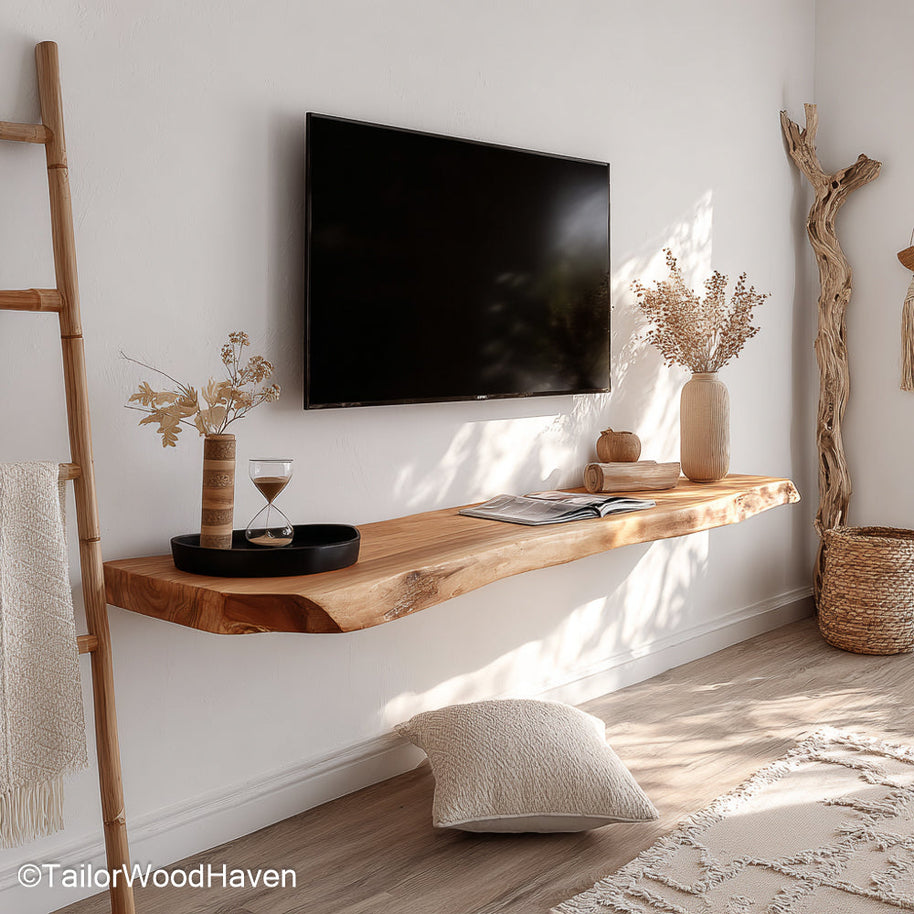
Featuring a streamlined, sleek wood finish, these shelves offer a modern aesthetic perfect for open-concept spaces and contemporary living rooms.

